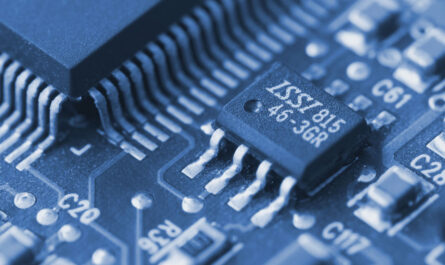These systems have widespread applications across industries in automating production processes and manufacturing robotic equipment. This article explores the concept and working of linear motion systems along with key components and their uses.
Types of Linear Motion
Linear motion can be of two main types – translation and sliding. Translation refers to the straight line motion of an object from one point to another without any angular movement. Sliding motion involves an object smoothly shifting along a surface or guide without leaving it. Based on driving mechanism, Linear Motion Systems are categorized as hydraulic, pneumatic, mechanical and electrical.
Hydraulic Linear Motion
Hydraulic linear actuators use fluids like oil or water to produce linear displacement. A hydraulic cylinder assembly consists of a hollow cylindrical tube capped at both ends with pistons that move back and forth. As fluid pressure is applied to one side, the opposing piston extends in a straight line. Hydraulic systems offer high mechanical advantage but require extensive piping. They find application in construction equipment, transportation and heavy manufacturing.
Pneumatic Linear Actuation
Compressed air or other gases are utilized to power pneumatic linear actuators. Also called air cylinders, these have a cylinder body with sliding pistons moved by differential air pressures. Being clean, economical and maintenance-free, pneumatic actuators see widespread adoption in automation. Common applications include packaging machinery, automotive assembly lines and semiconductor fabrication equipment.
Mechanical Linear Motion Systems
Screw jacks, lead screws, ball screws and cam mechanisms are some mechanical methods to convert rotational motion into linear output. Lead screws with nut attachments provide precise linear positioning and work well for feed drives and assembly lines. Ball screws offer low friction translation ideal for CNC machine tools. Cable or chain driven systems use continuous flexible elements to link rotational input to linear motion transmission.
Electric Linear Actuators
Stepper motors, servo motors and linear motors directly produce linear displacement under electrical control. With high accuracy and repeatability, electric actuators are core components in semiconductor equipment, laboratory automation, medical devices and robotics. Linear motors can lift and transport loads precisely along magnetic rails. Ball screw drives along with servo motors deliver linear motion for pick and place machines.
Key Components in Linear Motion Systems
Guides: Provide smooth constrained linear movement along an axis. Common guide types are linear rails, plain rods, roller bearings etc.
Bearings: Reduce friction between the moving component and guide surface through rolling or sliding contact. Ball bearings, linear bearings and air bearings are commonly used.
Carriages: Components that translate along guides undergoing linear motion. Carriages often carry loads and work payloads.
Gears & Couplings: Transmit rotary motion into linear motion or vice versa through mechanisms like lead screws, ball screws, belts, chains etc.
Sensors: Monitor linear position or velocity with transducers like encoders, limit switches and linear potentiometers for closed loop control.
Actuators: Generate controlled linear forces and displacements. Common actuator types are discussed above like hydraulic/pneumatic cylinders, stepper/servo motors.
Transmissions: Transmit motive power along the linear axis through elements like shafts, belts, couplings, chains, cables etc.
Applications of Linear Motion Systems
Semiconductor Manufacturing Equipment
Chip manufacturing relies heavily on ultra-precise linear motion to sequentially process wafers. Conveyor belts, robotic arms, wafer handling equipment and placement stages all incorporate linear drives.
Packaging Machinery
Pick and place machines, sealing and lidding systems, bottle fillers use linear actuators and feed screws for rapid packaging of food items, pharmaceuticals and consumer goods.
CNC Machine Tools
From lathes to milling centers to laser cutters, CNC machines employ linear guides and ball screw drives with digital readouts for highly controlled material removal and part production.
Medical Equipment
From MRI equipment and patient beds to surgical tools, medical devices leverage linear motion for precision positioning, scanning and delicate procedures.
Automated Warehousing
Storage and retrieval systems utilize network of rails and robotic shuttles transferring inventory between storage shelves and loading docks.
Conclusion
In summary, linear motion systems convert different motive powers into controlled straight line movements, facilitating automation across diversified industries. Advances in linear motor technology, precision engineered components and high accuracy feedback controls are driving their increased adoption in manufacturing equipment, production machinery, robotics and many other technologies where repeatable linear motions are critical. Ongoing research will further improve performance and lower costs of linear motion systems.
*Note:
1.Source: Coherent Market Insights, Public sources, Desk research
2.We have leveraged AI tools to mine information and compile it




